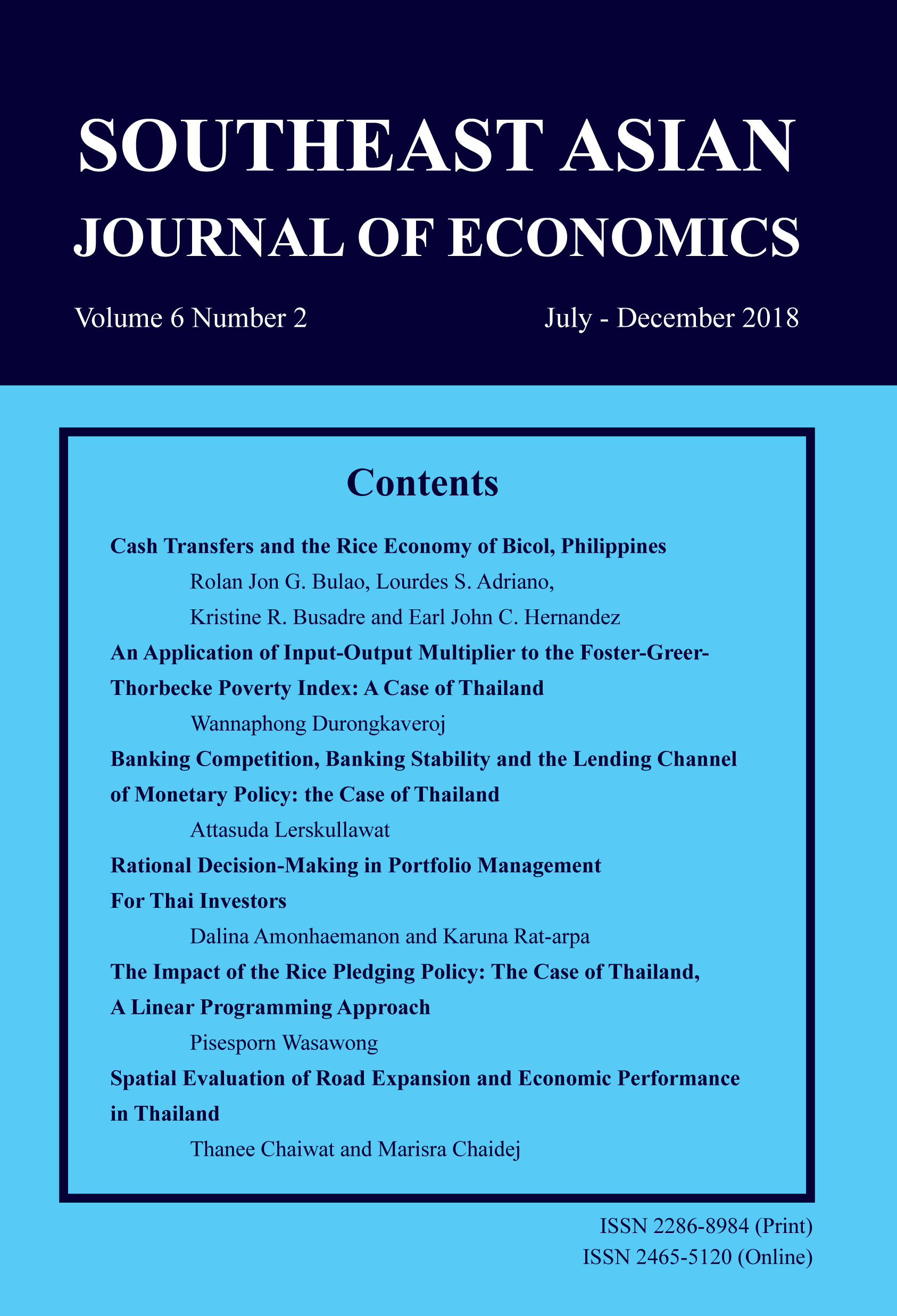Assessing Tax Incentives for Investment: A Case Study of Thailand
Keywords:
Effective Average Tax Rate, Investment Incentives, Tax HolidayAbstract
This study examines Thailand’s tax incentives for investment. It takes into account important tax provisions under standard and preferential treatments, and computes effective average tax rates (EATRs) applied to the country’s focused industries. It then compares Thailand’s EATRs with those of ASEAN peers. Such industry-specific lens is crucial since the tax benefits offered as well as the composition of investment assets can vary substantially between industries. It finds that, Thailand’s tax incentives are broadly comparable to those of its ASEAN peers. Under the maximum incentives, the EATRs range from 6-9% depending on the investment intensity in each industry. This suggests that, with the exception of targeted incentives for the biotech industry, there is not much need to expand tax or monetary incentives. The results also indicate that accelerated depreciation and investment tax allowances are two options that may perform better than tax holidays in term of minimizing the incentive redundancy.
Downloads
Published
How to Cite
Issue
Section
License
Copyright (c) 2016 SOUTHEAST ASIAN JOURNAL OF ECONOMICS

This work is licensed under a Creative Commons Attribution-NonCommercial-NoDerivatives 4.0 International License.
The submission of a manuscript implies that the paper is an original work and has not been published elsewhere. The author(s) authorize the journal to reproduce or distribute the paper in printed or other electronic forms.







